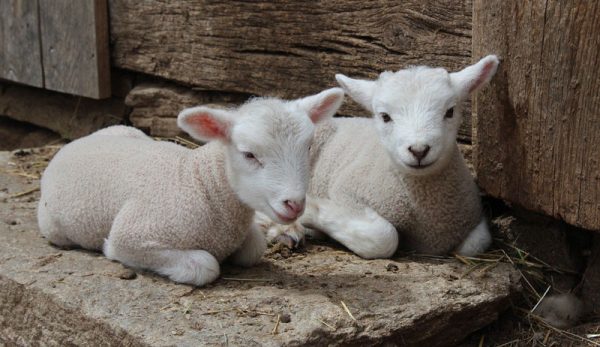
With birthing season in full swing, now is the perfect time to discuss one of the great mysteries (and frustrations) of lambing—a condition colloquially known as ringwomb (not to be misheard as ringworm, a fungal condition of the skin).
What’s Ringwomb?
In medical terminology, ringwomb is an incomplete dilation of the cervix. Full dilation is needed for the lamb to exit the birth canal. So from the description alone, you can see how this condition quickly develops into an emergency situation.
If you raise and breed sheep, at some point you will likely encounter this condition. It’s a marvel to me that, in this day and age and for as common as this condition is, we still don’t know what causes it. Theories on its cause include genetic factors, hormonal imbalances and nutritional causes.
Likely it’s a combination of more than one factor.
Read more: Here’s an overview of what you’ll need this lambing season.
What to Look For
You will typically suspect ringwomb when a ewe has been in labor for a few hours but the process has not progressed. Sometimes her water may have broken, but no lamb makes an appearance soon after. The ewe may keep trying or, if left too long, may weaken and stop pushing altogether.
On examination, you’ll find a cervix that is barely open—most commonly allowing only a few fingers through, when in normal circumstances at this point in the process you should be able to insert your entire hand.
Read more: “Did my informal lambing calculator backfire this year?”
What to Do
Once ringwomb is suspected, your best course of action is to call your veterinarian. Manual manipulation of the cervix—meaning slow and gentle manual dilation—rarely works. Rather, it just results in hurting the ewe, damaging the cervix and stressing her further.
Medical treatment also doesn’t have a good track record in fixing this issue. Some keepers attempt to administer calcium or hormones such as oxytocin to help dilate the cervix. But in waiting for these to help, one loses more time.
With a cervix not properly dilated, the fetus is essentially “waiting at the gates”—knocking at the door unable to get out. If left too long, you will lose the lamb and eventually lose the ewe, too.
So what to do in such dire circumstances? The best option is a C-section. This has the best outcome for the ewe. And, if done early enough, the surgery offers a reasonable chance at saving the lamb, too.
Once your vet comes out, confirms the diagnosis, and a C-section is performed, what next? Hopefully you have a newborn lamb (or two or three) to help the ewe care for. Ringwomb is not necessarily accompanied by lack of milk production. The ewe may need some assistance, however, depending on how many lambs she has and how weak she is from the surgery.
More importantly, however, is the question of the ewe’s future. Due to the consideration that ringwomb has at least a partial genetic link, many vets and experienced sheep producers recommend removing affected ewes from the flock. They also suggest keeping resultant lambs as breeding stock.
Whether this is the right decision for you depends on the size of your flock and your hobby farm goals.




